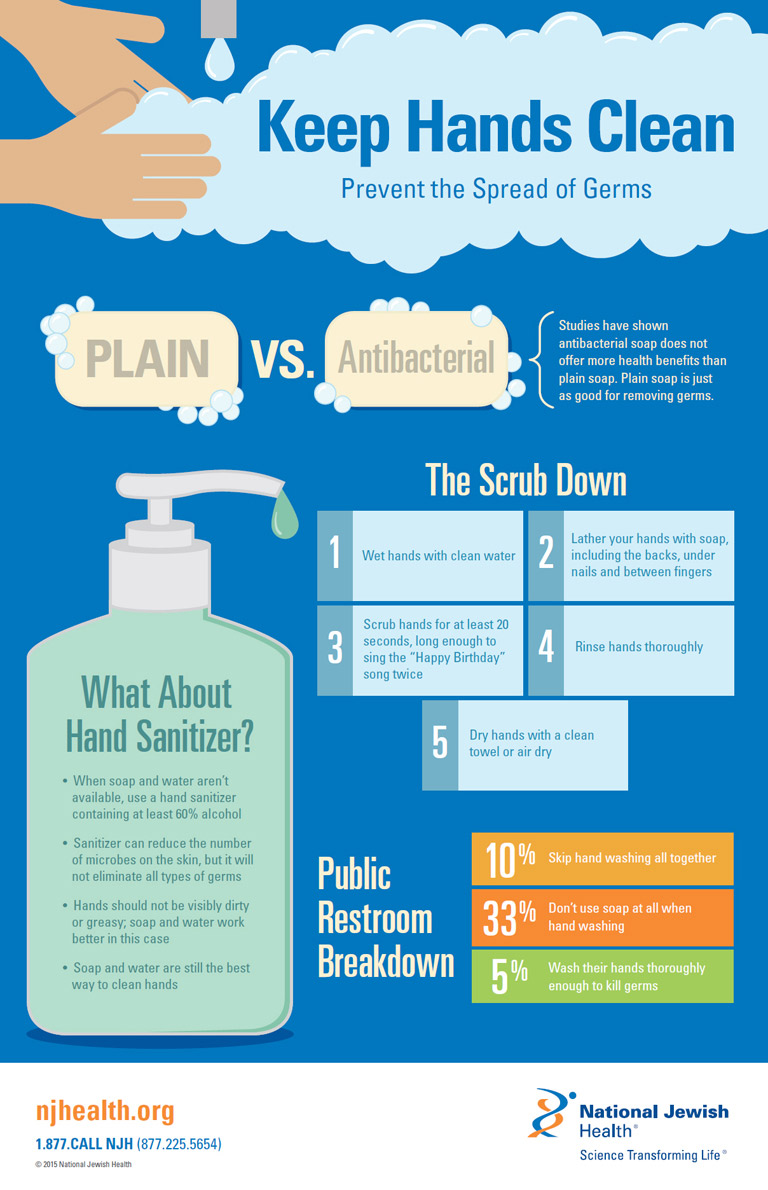Search for a doctor or hospital in your network.


Search for a doctor or hospital in your network.

Get News & Updates Directly To Your Inbox
Germs are lurking on the handrail of every stairway you use. The same handrail a woman gripped right after coughing into her hand. Now her germs are doing a happy dance on your skin.
Invisible germs are slathered all over the touchscreens you tap at the grocery store and your favorite coffee shop. They wait to hitch a ride every time you grab the gas nozzle to fill up your car or truck.
These colonies of germs peak from December through May. Think of it as the trouble-making prime of their lives. The time they easily spread from person to person every time someone coughs, sneezes or simply talks. Droplets from an infected person float through the air and are inhaled by others.
They can also land on anyone or anything within three feet. Germs can live for HOURS on surfaces like doorknobs, desks and tables. If someone touches their eyes, nose or mouth after coming in contact with a contaminated surface, they may become ill.
There’s an easy way to protect yourself. Washing your hands often is one of the best ways to avoid getting and spreading a cold or flu.
Sure, it's impossible to keep your hands germ-free all the time, but frequent hand washing limits the transfer of bacteria and viruses. You only need soap and water or an alcohol-based hand sanitizer.
You may we wondering: Is one better than the other? Let’s compare the two.

Infographic appears courtesy of National Jewish Health
What’s the best way to wash your hands? Here’s a simple how-to:
Hand sanitizer is a portable way to get the germs off your hands when soap and water aren’t available. Not all hand sanitizers are the same, though. Choose one that is at least 60 percent alcohol.
Alcohol-based hand sanitizers can kill bacteria and some viruses. They do not work against norovirus, a common virus that can cause serious illness.
While alcohol-based hand sanitizers are considered a safe and effective alternative when you can’t wash, old-fashioned soap and water is your best choice for really getting clean.
There are some good rules of thumb to follow when it comes to wiping out those nasty, illness-causing germs on your hands.
Lather up to help protect your health before:
Lather up to help protect your health after:
Feeling icky? Start scrubbing.
Originally published 12/21/2015; Revised 2022, 2024
Blue Cross and Blue Shield of Texas, a Division of Health Care Service Corporation,
a Mutual Legal Reserve Company, an Independent Licensee of the Blue Cross and Blue Shield Association
© Copyright 2025 Health Care Service Corporation. All Rights Reserved.
Verint is an operating division of Verint Americas, Inc., an independent company that provides and hosts an online community platform for blogging and access to social media for Blue Cross and Blue Shield of Texas.
![]() File is in portable document format (PDF). To view this file, you may need to install a PDF reader program. Most PDF readers are a free download. One option is Adobe® Reader® which has a built-in screen reader. Other Adobe accessibility tools and information can be downloaded at https://www.adobe.com/trust/accessibility.html.
File is in portable document format (PDF). To view this file, you may need to install a PDF reader program. Most PDF readers are a free download. One option is Adobe® Reader® which has a built-in screen reader. Other Adobe accessibility tools and information can be downloaded at https://www.adobe.com/trust/accessibility.html. ![]()
![]() You are leaving this website/app ("site"). This new site may be offered by a vendor or an independent third party. The site may also contain non-Medicare related information. Some sites may require you to agree to their terms of use and privacy policy.
You are leaving this website/app ("site"). This new site may be offered by a vendor or an independent third party. The site may also contain non-Medicare related information. Some sites may require you to agree to their terms of use and privacy policy.
Powered by Verint